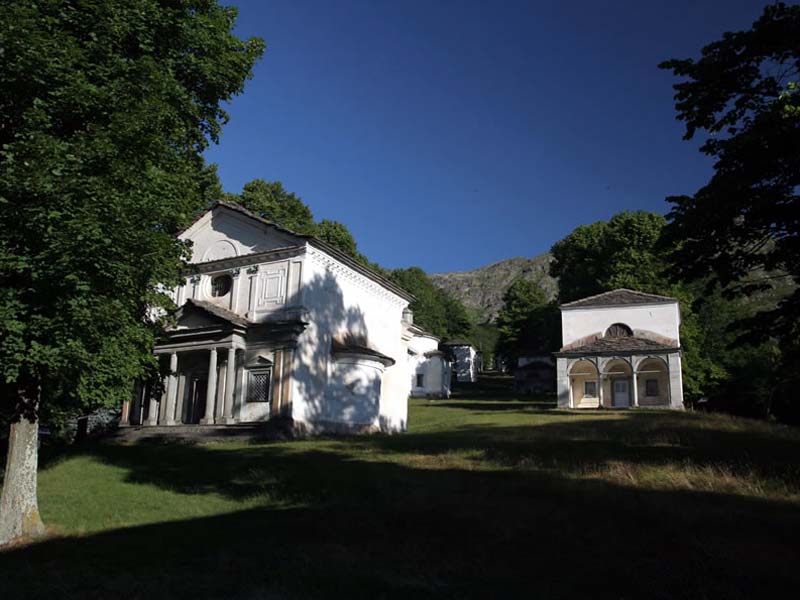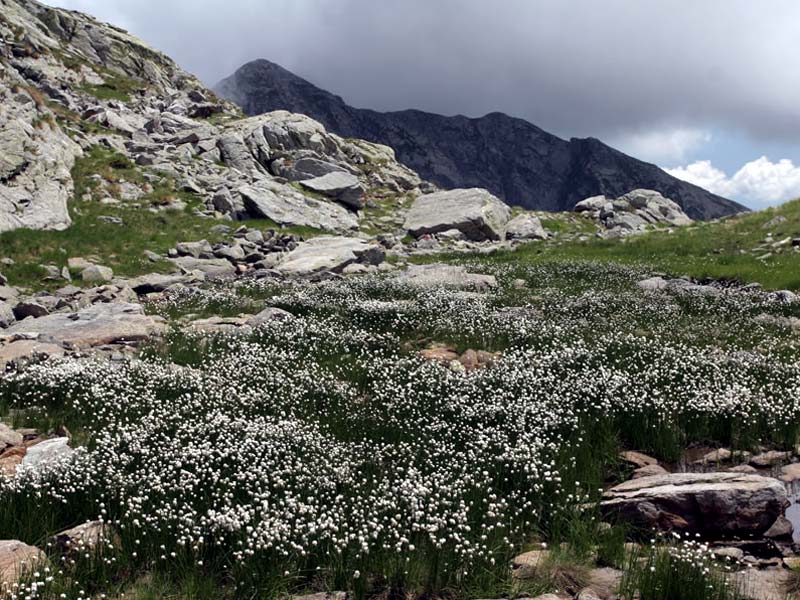Points of Interest
Art, Faith, and Architecture
Sacro Monte di Oropa, included in July 2003 in the list of UNESCO World Heritage, consists of 17 chapels populated with polychrome terracotta statues, 12 of which are dedicated to the life of the Virgin Mary and 5 of which are dedicated to episodes linked to the tradition of the Sanctuary.
- General features
Summary of the main historical-artistic features of Sacro Monte di Oropa.
- The Chapels
Sacro Monte di Oropa, included in the list of UNESCO World Heritage, consists of 12 chapels populated with polychrome terracotta statues dedicated to the life of the Virgin Mary
The Botanic Garden
The Sanctuary houses since 1998 the Botanic Garden "Nostra Signora di
Oropa", whose management is entrusted to the Biellese section of WWF
Italia.
The same Association has activated, since the beginning of
its management, a series of field surveys, with the collaboration and
supervision of the Natural Science Regional Museum of Turin and of the
Department of Vegetal Biology of the University of Turin. These surveys
include the conservation monitoring (in situ conservation) and the cultivation in nurseries (ex situ conservation)
of the floristic species which are considered critical, rare, or
localized according to the Regional Red List of the Italian Plants.
Since 2001 you can also admire the "museum cell" of the Garden
preserving the naturalistic collections belonging to the Administration
of the Sanctuary of Oropa. In particular, the historical herbarium
(promoted in the early 1900 by the director - at that moment - of the
"Regio Orto Botanico" of Turin, Oreste Mattirolo) has been the object
of a recent research carried out under the supervision of the Botany
Section of the Natural Science Regional Museum of Turin, which enabled
its conservation maintenance and the reorganization of the data it
contains, a fundamental premise to develop further field surveys.
Sacred Mountains in Europe
The term "Sacred Mountain" means a religious complex, the result of a particular movement of faith, art, and religiousness born at the end of the 15th century and which became well-established not only in Italy, but also in many other areas in Europe, until the last mannerist examples of the late 18th century.
The Sacred Mountain is not therefore an occasional fact, but the result of an idea promoted at first by the Order of the Friars Minor of S. Francesco, which has been developed then for about three centuries, above all after the renewal launched by the Council of Trent against the Protestant Reformation.
The great project of transposing the holy places into Catholic countries originated in Italy with the "New Jerusalem" of Varallo Sesia (VC) and that of Montaione (FI), almost contemporaneously with Braga in Portugal; afterwards, it developed on the Alpine Chain - Switzerland (6), Italy (17), Austria (over 60) - and in the rest of Europe: Portugal (7), Spain (5), France (40, out of which 39 are Breton's), Belgium (7), Germany (60), Czechoslovakia (16) and occasionally also in Hungary, Turkey, Russia, and Yugoslavia.
Sacred Mountains became authentic territorial systems at a European scale. Besides the Italian one we know, this kind of system developed very much in Portugal, France, and Poland. Even with their own particular features, they have (besides the religious principles) another essential element in common: the relationship with the nature and landscape surrounding and underlying, even if with different stylistic effects, the urban plan of the Sacred Mountain.
The site "I Sacri Monti del Piemonte e della Lombardia" has been included in the UNESCO World Heritage List.








